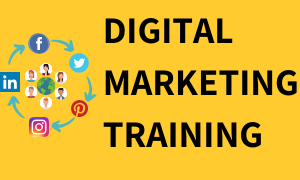
There are many effective resources that can be used to teach the three times table. They are high-quality and packed with valuable teaching tips accumulated over many years. These books are full of visually stimulating material and colorful images that keep kids engaged and interested. Here are three ways to make Times Table 3 fun and interactive for your students. You can also test their knowledge by creating your own learning game. Also, don't forget about trying them out in a classroom.
The 3 Times Table
There are many methods to practice the 3-times table. You can practice your 3 times table either in a sequential or random order. It is also possible to practice the 3 times table on your mobile phone, tablet or PC. You can also print out the worksheets and work on them whenever you are spare time. It is important to learn the 3 times tables quickly and easily. You'll need it for year 4 maths.

You can practice it
It is very beneficial for elementary school students to practice the times tables. There are many ways to practice this multiplication skill, from practicing a specific table to doing it on the internet. You can practice time tables one by one, all of them or any table that you choose. The more you practice, the faster you'll be at recalling the numbers in the times table. Here are some ways to practice times table 3:
Recite it
It's easy to remember the three times table. You don't need to know any special tricks. Remember that the multiples of three in a multiplication chart are an even mix of numbers. The difference between these two results is three. The times table can be recited three times to recall the math facts. You can also practice multiplication and addition with your child, in addition to learning the times table. This method of memorizing the times table will help you remember the patterns of 1, 3, 6, and 9 with ease.
Make a video game
You can teach your child times tables by creating a game. Multiples of 3 can be a valuable subject to learn and a fun way for children to reinforce their learning. You can create a gaming game with your tablet or computer. Be sure to choose a game suitable for your children that also includes the timestable. The game will appeal to children who enjoy solving equations and are eager to complete it.
Ask questions at the multiplication chart
It should be possible to ask questions about the multiplication table. For example, how many times is seven times six times ten? The answer will be 21. Then, you can divide this answer by two to find the product. When you do this, the product will be twice the original. This concept can also be applied for other multiplication facts. You can only remember 81 entries of a multiplication table.

Have fun with it
There are many ways to make times table 3 fun for your kids. The following 3 times table activities will keep your kids engaged while they learn. Ask your students to answer 6 questions on the table and then have them call out the correct answers. Hang bunting decorated with the three times table sums is another way of making times table 3 fun. Another fun activity is Humpty Dumpty's Wall Multiplying by 3 Worksheet. Players roll the dice to find the sum of the number they are adding, and then add it up.
FAQ
Is becoming a teacher difficult?
It takes a lot of commitment to become a teacher. You will need time to study.
While earning your degree, you should expect to work about 40 hours per săptămână.
Additionally, you need to find a job which suits your schedule. Many students have trouble finding part time jobs that balance schoolwork with their lives.
When you are hired for a full-time job, you will most likely be required to teach classes during the school day. You may even need to travel to different schools throughout the week.
What are the various types of early childhood education available?
There are many ways you can describe early childhood education. Some of the most popular ones are:
-
Preschool - Children ages 2 to 5
-
PreKindergarten for children aged 4-6
-
Head Start/Hestart - Children aged 0-3
-
Day Care/ Daycares- Children aged 0-5
-
Child Care Centers - Children ages 0 to 18
-
Family Child Care for Children Ages 0-12
-
Home schooling - Children aged KG to 16.
What factors should you consider when choosing your major?
You should first decide whether you would rather go straight into a profession or go to college first. Then you should make a list of your interests and talents. Reading, listening to music and talking to people are all possible interests. Your talents can come from singing, dancing, drawing, painting, writing, sewing, cooking, woodworking, gardening, photography, carpentry, auto mechanics, plumbing, electrical wiring, computer programming, accounting, mathematics, chemistry, physics, engineering, medicine, dentistry, nursing, psychology, law, social work, teaching, etc. Once you've identified your interests and talents you can use them to guide you when choosing a major.
If you are interested to be an artist, art history or fine arts might be a good choice. Biology might be a good choice if you are passionate about animals. Pre-medicine or medical technology may be an option for you if your dream is to become a physician. If you'd like a career that involves computers, you might check out computer science or computer networking. There are many possibilities. Be clear about your goals.
Do I want to specialize in one area or should I branch out?
Many students choose to concentrate on one subject (e.g. English History and Math) rather that branching into several subjects. However, it's not always necessary to specialize. You could, for example, choose to specialize in surgery or internal medicine if you are considering becoming a physician. You can also become a general practice physician, with a focus in family medicine, neurology, psychiatry or gerontology. If you're interested in a career as a business professional, you can focus on management, finance or operations research. It's your choice.
How much does a teacher make in early-childhood education? (earning potential)
The average salary for a teacher in early childhood is $45,000 per year.
However, there is an exception to the rule: salaries in some areas tend to be more than average. For example, teachers who work in large urban districts often earn more than those working in rural schools.
Salaries also depend on factors like how large the district is, and whether or non-degree-holding teachers.
Teachers start off making less money than other college graduates simply because they don’t have much experience. Teachers can see a dramatic increase in their income over time.
What is the difference between school and college?
Schools are usually divided into classes (or grades), with a teacher who is responsible for teaching a specific class. Colleges, which are often larger and offer more specialized classes, may also include university-level programs. Schools usually focus on basic subjects while colleges may offer a variety of subjects including arts, science, languages, business, etc. The curriculum at both levels is designed to prepare students for further study at higher levels.
What is a vocational college?
Vocational schools are institutions offering programs designed for people who want to enter a specific occupation. They can also offer training in specific skills and general education.
Vocational education has a significant role to play in society. It helps young people gain the skills they need to succeed. It provides high-quality learning opportunities for all students.
A vocational school provides a variety options for its students. They can choose from certificates, diplomas or degrees as well as apprenticeships, certificates, diplomas or degrees. Vocational school students learn both academic subjects and more practical subjects like math, science, English or social studies.
Statistics
- Globally, in 2008, around 89% of children aged six to twelve were enrolled in primary education, and this proportion was rising. (en.wikipedia.org)
- And, within ten years of graduation, 44.1 percent of 1993 humanities graduates had written to public officials, compared to 30.1 percent of STEM majors. (bostonreview.net)
- Among STEM majors, that number is 83.5 percent. (bostonreview.net)
- Data from the Department of Education reveal that, among 2008 college graduates, 92.8 percent of humanities majors have voted at least once since finishing school. (bostonreview.net)
- They are also 25% more likely to graduate from high school and have higher math and reading scores, with fewer behavioral problems,” according to research at the University of Tennessee. (habitatbroward.org)
External Links
How To
How do I apply to scholarships?
To apply for scholarship funding, first, make sure you qualify for it. Scholarships are granted to those who meet certain criteria.
For example, you can receive a grant if you are economically disadvantaged. A vocational training course is eligible to be considered for a work study program. A grant can also be granted if you are part of a minority community.
Once you have decided if you are eligible, you can begin applying.
You can apply online, in person, or over the phone. The application process varies depending on the type of scholarship.
You may be required to write essays on yourself and the reasons you are applying for scholarships. Others will ask questions such "Why did you choose this degree?"
You must fill out an application for scholarships and attach supporting materials.
Your scholarship provider will evaluate the information you supply. You will be notified by email or postal mail if you are selected.
If you are not chosen, you still might qualify for another scholarship. Contact your scholarship provider for details.